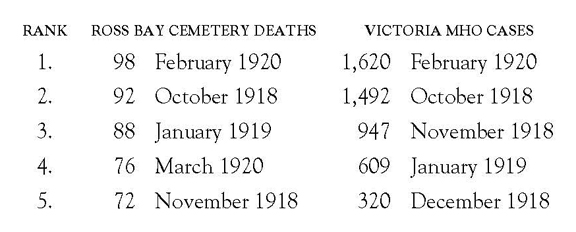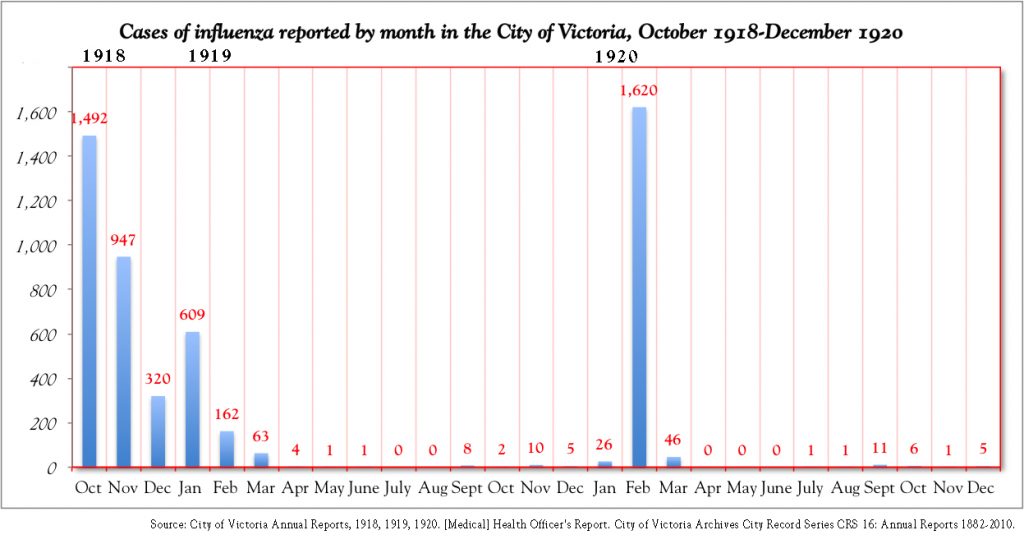The Spanish flu came to Victoria in three waves: October 1918, January 1919, and February 1920. Surprisingly, it was the attack in 1920 that resulted in the highest month of reported cases in the city.
These figures, compiled in the Victoria Medical Health Officer’s (M.H.O.) annual reports, may be low. Many cases of Spanish Influenza among Greater Victoria residents went unreported, especially earlier in the epidemic. As Saanich Chief of Police Dryden told Council on November 5, 1918 “[I]f it were possible to get all the patients to report to the medical officer, the number of known cases would take a sudden jump.”
Colonist, November 7, 1918, p. 8.
The Victoria M.H.O.’s reports did not include deaths month-by-month. But comparing the peaks with those in the Ross Bay Cemetery death registers shows that four of the five highest months were in both measures, and the highest two in both were the same.
 The M.H.O.s’ ban on meetings was re-invoked in January 1919 and again in February 1920. Public responses were mixed. In November 1918 the Anglican bishop led a revolt against the ban on open-air church services. For more on gatherings see Free Time with the Flu and Armistice crowds ignore ban.
The M.H.O.s’ ban on meetings was re-invoked in January 1919 and again in February 1920. Public responses were mixed. In November 1918 the Anglican bishop led a revolt against the ban on open-air church services. For more on gatherings see Free Time with the Flu and Armistice crowds ignore ban.
<October attack Free Time with the Flu: Worship and Leisure During the Outbreak>

